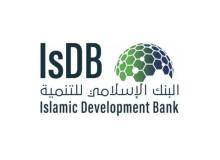Introduction
As a Multilateral Development Bank that consists only of member countries from the Global South, the Islamic Development Bank, since its inception, has championed South-South Cooperation (SSC) among its member countries as one of its key founding principles. For over four decades, the Bank has reflected this in its operations by bringing member countries together to help one another solve common development challenges.
Technical Cooperation Program (TCP)
Launched through the IsDB Board Resolution 403/(63) 2A issued in 1981, the Technical Cooperation Program (TCP) is a South-South Cooperation program that supports the transfer and exchange of skills, knowledge, and know-how among member countries (MCs) to foster their socio-economic development through (i) recruitment of experts (ii) organization of familiarization and study visits for senior officials, (iii) on-the-job training to technical, officials in mid-level management and (iv) organization of seminars, workshops and conferences.
TCP provides short term capacity development interventions for addressing the instant needs of member countries by making use of the fast track processing cycle, quick implementation process, and simple disbursement modality that helps in ensuring timely availability of funds to beneficiaries.
Based on the long experience of implementing technical cooperation operations, the most notable lessons learned can be outlined as follows:
- Member countries possess a wealth of knowledge and expertise that can be tapped to strengthen economic development.
- Long-term engagements among member countries can produce more sustainable results as well as enduring partnerships.
These circumstances eventually lead to the formulation of the Reverse Linkage mechanism.
Reverse Linkage
Reverse Linkage mechanism – is defined as a technical cooperation mechanism enabled by IsDB whereby member countries and Muslim communities in non-member countries, exchange their knowledge, expertise, technology and resources to develop their capacities and devise solutions for their autonomous development. As an enhanced approach to technical cooperation, the Reverse Linkage mechanism has been piloted since 2012, during which time many standalone projects responding to the capacity development needs of member countries were formulated and have either been completed or are currently being implemented. From the lessons learned from the pilot phase, IsDB formulated its Reverse Linkage Policy that strengthens connectivity among member countries. The Bank is currently moving to mainstream Reverse Linkage into its ordinary projects as a contemporary tool of development that promotes SSC.
The Reverse Linkage mechanism is fully in line with the South-South Cooperation principles and has the following features:
- Strategic alignment: Projects must be in line with the recipient country’s national development priorities.
- Inclusivity: The mechanism considers that all member countries have proven knowledge, expertise, technology or resources to offer, regardless of their level of development.
- Win-win arrangements: All stakeholders have something to gain through the transfer of knowledge, expertise, technology and resources.
- Ownership and commitment: Reverse Linkage requires all sides of the exchange to commit technical, in-kind, and/or financial resources to a project.
- Peer-to-peer approach: Reverse Linkage initiatives are led by the provider and recipient member countries, using a direct consultation process leveraging the endogenous knowledge of the recipient and expertise of the provider.

